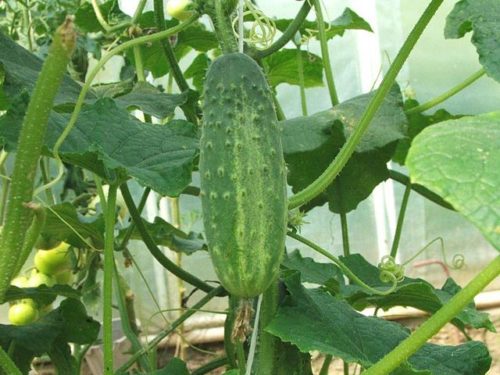Gherkins are actually small cucumbers, but without the cucum
Also known as:
Pickle (US, Canada)
You are viewing the mobile-adapted version of the page.
The one for tablets, laptop and desktop also provides general information, such as origin and cultivation.
Gherkin cucum
Pre-sow in seed trays from mid-April – mid-May the plants can go outside. Cucumbers for indoor cultivation (greenhouse) can be sown earlier – mid-March. Use branches (prunings) or chicken wire to guide the plants. Just like cucumbers, gherkins like a sunny position in a nutritious soil that is not too dry.
Harvest the gherkins when they are the desired size; if you let them continue to grow, they will become small cucumbers, but without the cucum
Bugs
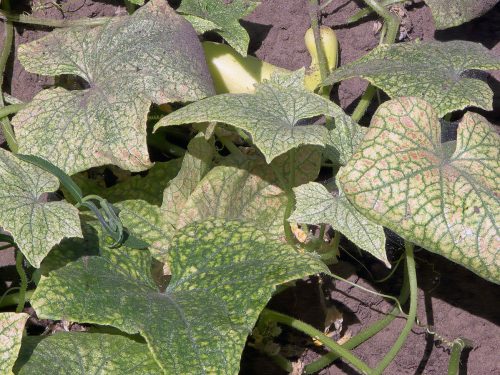
Dot-shaped spots on the leaf; mites on the underside: Red spider mite (Tetranychus urticae).
Deformed fruits: European tarnished plant bug (Lygus rugulipennis).
Deformed leaf: aphid (Aphidoidea).
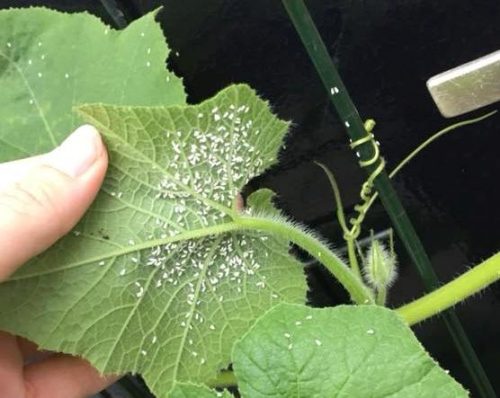
Leaf turns yellow and bumpy; eggs on the underside of the leaf: Greenhouse whitefly (Trialeurodes vaporariorum).
In greenhouse cultivation: silvery spots surrounded by dark green spots (excrement): Onion thrips (Thrips tabaci).
Curled leaves; here and there is an aphid of about 2 mm size: Green peach aphid (Myzus persicae).
Fungi & diseases
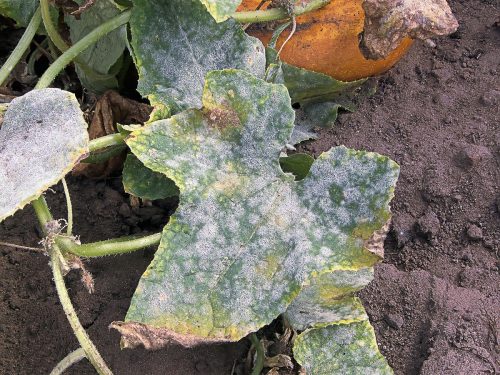
White spots on leaves; growth retarded: Powdery mildew (Ascomycete fungi).
White, woolly mold: White mold (Sclerotinia sclerotiorum).
Plant wilts and leaves turn yellow on one side. White (sometimes pink) mold develops on stem and tendrils: Fusarium wilt (Fusarium oxysporum).
Wet, rotten spots at the bottom of the stem: Fusarium foot rot (Fusarium solani).
Leaf becomes covered with a powdery mildew: a variant of Powdery mildew (Podosphaera fusca).
Lower leaves turn yellow, plant goes limp because the roots can no longer absorb water: infestation by Black root rot of cucumber (Phomopsis sclerotioides).
Square spots on leaf; bacterial slime, fruit will rot: Cucumber leaf spot (Pseudomonas syringae).
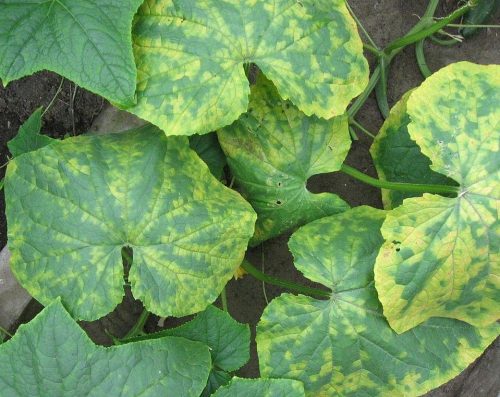
Yellow-green, circle-shaped spots on leaves; serpentine lines: Cucumber mosaic virus (CMV).
Leaf and fruit become covered by a thick layer of mold and wilt: Verticillium wilt (Verticillium spp).
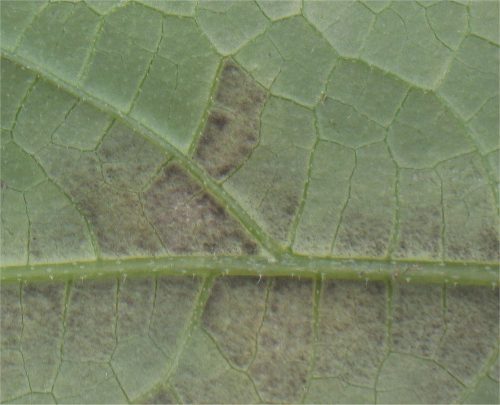
White fungal fluff on the underside of the leaves: Downy mildew (Peronosporaceae). It usually involves the lower leaves because the mold get onto the leaf by splashing rain. In powdery mildew (Ascomycete fungi), the fluff is on the top of the leaves.
Light and dark green spots on young leaves, emergence of dark green bumps. Full-grown leaves show a blotchy pattern: Cucumber green mottle mosaic virus (CGMMV).
Other
Leaf stems grow from the leaf axils: remove offshoots (pinching).

